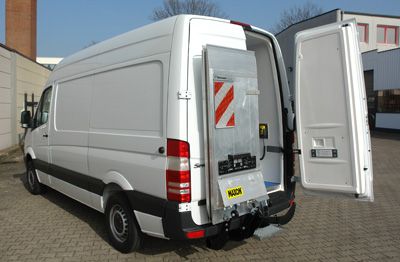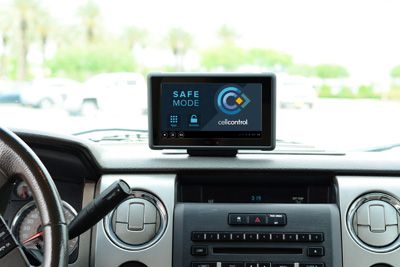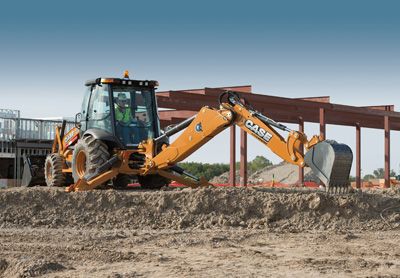Will Solar Drive the Future of Electrified Trucks?
Several years ago, when gas prices were higher and an industry need arose to reduce costs and seek alternative solutions, conversations about harnessing the sun intensified. Combined with advances in electric vehicle technology, the possibilities of what manufacturers and fleets could do in this realm began to grow.
Solar power began to be used to extend the range of some electric and plug-in hybrid electric vehicles. And a full-size electric pickup truck using solar to extend its range was introduced at the 2014 North American International Auto Show.
Given the evolution of solar power use in vehicles over the years, where are we today?
As it turns out, on a slightly different course than one may have assumed. Rather than focus on the use of solar to add range to electric vehicles, utility fleets are, for example, adding panels as components of larger energy management systems. Solar power may be used to recharge vehicle starting and auxiliary batteries. It also can supplement battery charging while a vehicle is being driven or while it’s stopped – a valuable feature where legislation may prohibit idling. Additionally, solar power paired with an inverter system converts DC battery power to AC household power to charge cordless tools, laptops, test equipment and other work truck loads that require AC power without draining the battery.
“It’s a very clean and silent way to create AC power without using a generator,” said Sean O’Connor, sales channel manager of Go Power! (www.gpelectric.com). His company, based in Victoria, British Columbia, has been in the industry since 2000, originally starting with solar and inverter systems for RVs. Go Power! introduced its panels and power inverters to the work truck market five years ago when the company recognized a need to greatly reduce battery replacement within fleets. Minimizing the frequent battery replacements typical among fleets can bring a fast return on investment.
Even on cloudy days, a solar panel still can generate power. Panels range from about 30 watts to 100-plus watts; regardless of the power produced, a solar power system can use a solar controller, which acts like a fuel shutoff valve, to protect the battery from overcharging and prolong battery life.
Mike Stephens, Go Power! division manager, said every fleet has a slightly different niche and need. The right combination might include an inverter only, or a solar panel for trickle charging, or solar panels and an inverter. Systems can be uniquely designed to meet a fleet’s requirements.
Harnessing Practicality
With regard to using solar power, there are some things that still aren’t completely practical – yet. But Dave Meisel, senior director of transportation and aviation services at Pacific Gas and Electric Co., has seen solar’s practical applications. His fleet employs an electric power takeoff (ePTO) system that uses a series of batteries to power onboard equipment at job sites, and truck-mounted solar panels have been used to charge those ePTO batteries.
Altogether, the system has helped increase productivity by extending the number of hours employees can work in noise-restricted areas because power no longer has to be supplied by a noisy generator. There also have been increases in safety because workers can now communicate by talking rather than having to use hand signals over the sound of that generator, and bucket truck operators – who traditionally sit in the back near the exhaust – have greatly benefited from reduced emissions on the ground. Meisel partnered with Altec (www.altec.com) to electrify PG&E’s worksites through the company’s Jobsite Energy Management System (JEMS), “and solar has been a part of that,” said Meisel, whose California-based fleet of roughly 15,000 assets has one of cleanest power generation mixes in the nation. “Electrifying the worksite has been a huge win for us.”
The way Meisel sees it, the biggest thing to remember about electrification is that the technology is still in its infancy. Its potential – and the full potential of solar power – remains to be seen.
“I don’t know that we’ve fully understood, at this stage of the game, how much this type of technology could benefit our industry,” he said. Meisel has one vehicle in his fleet, for example, that can act as a standalone generator with exportable power. “That technology is spreading relatively quickly. I’m sure there are some smart people out there who will move it further than we have. But we’re excited about potential. We’re excited about the opportunities that it presents,” he said.
About the Author: Fiona Soltes is a longtime freelance writer based just outside Nashville, Tenn. Her regular clients represent a variety of sectors, including fleet, engineering, technology, logistics, business services, disaster preparedness and material handling. Prior to her freelance career, Soltes spent seven years as a staff writer for The Tennessean, a daily newspaper serving Nashville and the surrounding area.
*****
Warming up to the idea of solar? Here are a few things to consider:
• Recognize that the benefits of using solar power may be difficult to quantify, said Pacific Gas and Electric Co.’s Dave Meisel. As part of a larger energy management system, there have been some obvious wins. But it’s important to look at the picture more broadly; gains don’t just stop “at the door of the garage,” Meisel said, and may expand to other departments and areas.
• If you’re considering a particular system, make sure it’s within the proper parameters of any anti-idling legislation in the state or states in which your fleet operates, and appropriate for individual requirements. In addition, understand that anti-idling legislation likely will keep expanding.
• Keep an eye on solar developments. There is much interest, for example, in the commercial trucking space. Through companies such as Go Power!, eNow (www.enowenergy.com) and Green Solar Transportation (www.greensolartransport.com), solar and electric vehicle technology continue to develop.












